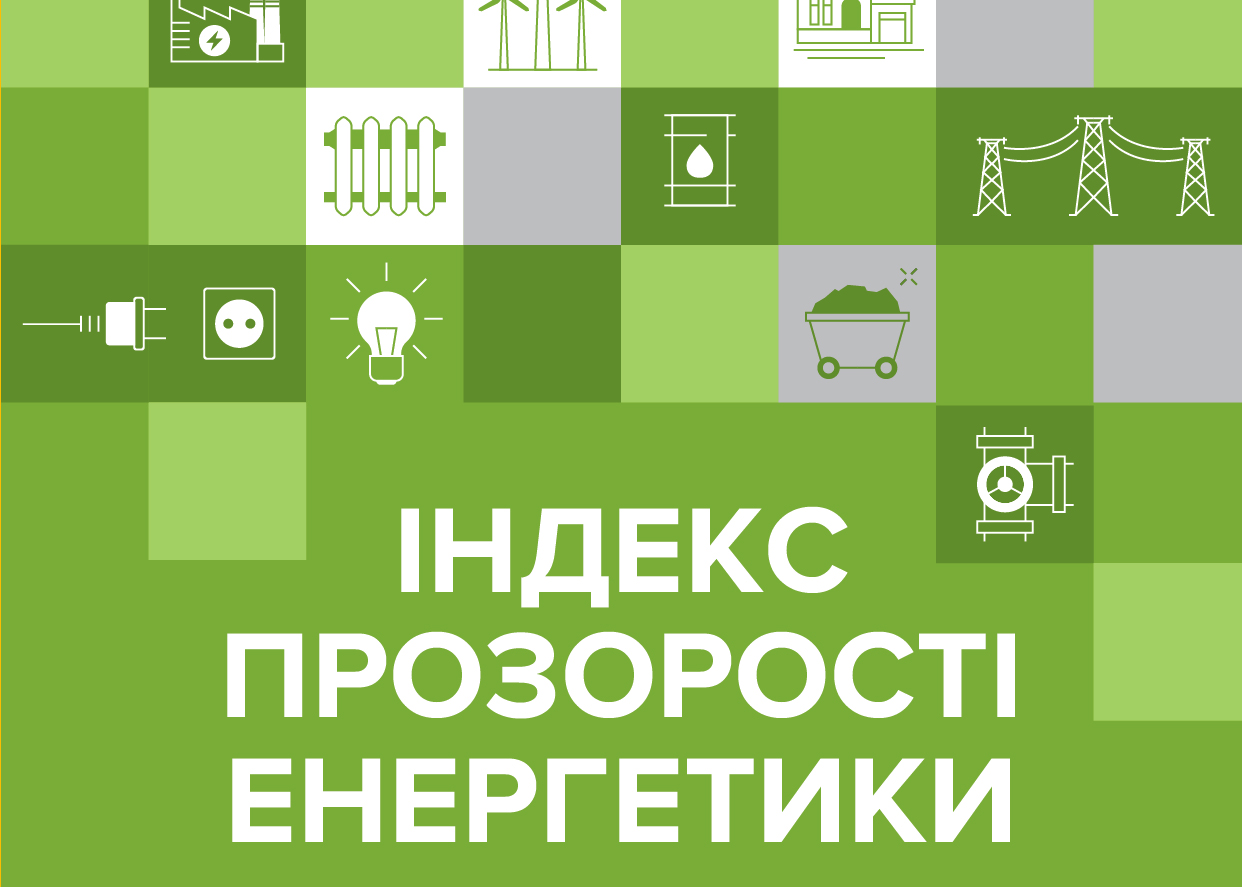Energy Transparency Index: Energy Sector Information Openness Has Improved
DiXi Group has analyzed energy sectors and identified regulatory gaps that lead to distortions of competition and increase corruption risks in the industry
Transparency in Ukraine’s energy sector is at a medium level, but has improved compared to previous periods. Bohdan Serebrennikov, the manager of the Energy Transparency Index project, stated this during the presentation Energy Transparency Index of Ukraine 2020: How Much Has the Sector Openness Changed Over the Year?
“Ukraine’s final score according to the assessment conducted in 2020 is 58 out of 100 possible, which indicates the average transparency of the energy sector. At the same time, compared to last year’s estimate, transparency in most categories has increased and the Index has increased by 10 points,” Serebrennikov said.
The 2020 Index covers 210 indicators, grouped into 8 categories and based on specific regulatory requirements and best global disclosure practices. The evaluation is the result of processing open source data on the functioning and development of the energy sector in the “from producer to consumer” chain. The transparency of Ukraine’s energy sector has improved compared to previous years and is 58 points out of 100 possible.
Assessment of transparency by categories:
|
Category |
Number of indicators |
Score |
Comparing with Index-2019 |
Grade |
Characteristic |
|
9 |
58 |
0 |
C- |
Average transparency |
|
72 |
59 |
+13 |
C- |
Average transparency |
|
33 |
58 |
+9 |
C- |
Average transparency |
|
15 |
53 |
+3 |
D+ |
Insufficient transparency |
|
34 |
68 |
+15 |
C+ |
Average transparency |
|
12 |
35 |
+8 |
F |
Inacceptable transparency |
|
20 |
59 |
+3 |
C- |
Average transparency |
|
15 |
56 |
+6 |
C- |
Average transparency |
|
Integral index: |
210 |
58 |
+10 |
C- |
Average transparency |
For example, the Balance Sheets category, which determines the transparency of annual and monthly energy statistics, was rated “average transparency”, but it has no positive changes.
The greatest progress is observed in the Consumption, Natural Monopolies and Supply categories (+15, +13 and +9 points, respectively).
These changes confirm the effectiveness of the measures already taken, the need for further reform of the energy sector and the expediency of efforts to increase its openness and transparency.
A comparison of energy markets showed that transparency by sectors is determined by the degree of readiness of the regulatory framework.
Assessment of transparency by sectors (markets):
|
Natural gas |
Electricity |
Oil and Liquid Fuel |
Steam Coal |
Heat Energy |
|
|
Sectoral indices |
64 |
66 |
22 |
48 |
74 |
|
63 |
63 |
38 |
63 |
n/a |
|
61 |
67 |
23 |
n/a |
n/a |
|
65 |
69 |
33 |
21 |
79 |
|
97 |
60 |
0 |
n/a |
n/a |
|
58 |
66 |
13 |
n/a |
94 |
|
Comparing with Indix-2019 |
+10 |
+17 |
-5 |
0 |
+26 |
Thus, after the introduction of new rules of the electricity market in 2020, the transparency of the relevant sector began to grow faster, ahead of the Natural Gas sector indicator by two points (66 compared to 64). As for the Oil and Liquid Fuel sector, to the development of which the state pays much less attention, its transparency remains unsatisfactory (22 points).
The “black boxes” and deficiencies in providing the information identified during the evaluation provided the basis for specific recommendations to authorities and companies, set out at the end of each section of the Index.
Particular attention should be paid to ensuring the independence of transmission system operators, increasing the transparency of network operators, participants in wholesale and retail segments of energy markets. Positive changes in terms of informing about the reliability and security of supply are not happening fast enough. Corporate reporting, including non-financial reporting, information on fiscal payments and quasi-fiscal transactions, as well as actions of authorities in the formulation and implementation of energy policy should be improved.
A novelty of the 2020 Index is a pilot assessment of the transparency of authorities that formulate and implement energy policy, deal with the regulation of the sector and are managers of information.
Assessment of transparency by authorities:
|
Authority |
Number of indicators |
Score |
Grade |
Characteristic |
|
Regulator (NEPURC) |
54 |
72 |
B- |
Good transparency |
|
Ministry of Energy |
21 |
53 |
D+ |
Insufficient transparency |
|
Antimonopoly Committee |
17 |
50 |
D+ |
Insufficient transparency |
|
State Statistics Service |
14 |
52 |
D+ |
Insufficient transparency |
|
State Agency on Energy Efficiency and Energy Saving |
12 |
66 |
C+ |
Average transparency |
|
Ministry of Ecology and Natural Resources |
7 |
70 |
B- |
Good transparency |
Their evaluation was carried out in terms of individual indicators of the Index. Preliminary estimates show that three of the six authorities (Ministry of Energy, AMCU, State Statistics Service) are still in the zone of insufficient transparency, while the other three (the NEPURC, State Agency on Energy Efficiency and Energy Saving, Ministry of Ecology and Natural Resources) are characterized by a medium or good level of transparency.
More details on the results of the study, including the table of transparency indicators containing ratings and comments, can be found on DiXi Group website.









